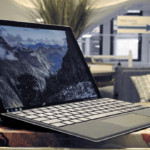DroneGun Tactical is a portable (but still illegal) drone scrambler
The only thing growing faster than the global drone population is the population of people thinking “how can I knock these annoying things out of the sky?” DroneShield offers a way to do just that, and now in a much more portable package, with the DroneGun Tactical — that is, if you’re an authorized government agent, which I doubt. Read More
Drug Firms Shipped 20.8 Million Pain Pills To West Virginia Town of 2,900
A congressional committee investigating the opioid crisis has discovered out-of-state drug companies shipped 20.8 million prescription painkillers over a decade to two pharmacies in a Southern West Virginia town with 2, 900 people. From a report: Between 2006 and 2016, two drug wholesalers shipped 10.2 million hydrocodone pills and 10.6 million oxycodone pills to Tug Valley Pharmacy and Hurley Drug in the town of Williamson, in Mingo County, the Charleston Gazette-Mail reported. "These numbers are outrageous, and we will get to the bottom of how this destruction was able to be unleashed across West Virginia, " the House Energy and Commerce Committee Chairman Greg Walden, R-Ore. and ranking member Frank Pallone Jr., D-N.J. said in a joint statement. Read more of this story at Slashdot.
Pocket-sized DNA reader used to scan entire human genome sequence
Enlarge / Sequence on a stick. (credit: Oxford Nanopore ) A few years back, a company called Oxford Nanopore announced it was developing a radically different way of sequencing DNA. Its approach involved taking single strands of the double helix and stuffing them through a protein pore. With a small bit of current flowing across the pore, the four bases of DNA each created a distinct (if tiny) change in the voltage as it passed through. These could be used to read the DNA one base at a time as it wiggled through the pore. After several years of slow progress, Oxford Nanopore announced that its sequencing hardware would be as distinctive as its wetware: a USB device that could fit comfortably in a person's hand. As the first devices went out to users, it became clear that the device had some pros and cons . On the plus side, the device was quick and could be used without requiring a large facility to support it. It could also read very long stretches of DNA at once. But the downside was significant: it made lots of mistakes. With a few years of experience, people are now starting to learn to make the most of the devices, as demonstrated by a new paper in which researchers use it to help sequence a human genome. By using the machine's long reads—in one case, nearly 900,000 bases from one DNA molecule—the authors were able to get data out of areas of the human genome that resisted characterization before. And they were able to distinguish between the two sets of chromosomes (one from mom, one from dad) and locate areas of epigenetic control in many areas of the genome. Read 12 remaining paragraphs | Comments
California Senate Defies FCC, Approves Net Neutrality Law
The California State Senate yesterday approved a bill to impose net neutrality restrictions on Internet service providers, challenging the Federal Communications Commission attempt to preempt such rules. From a report: The FCC's repeal of its own net neutrality rules included a provision to preempt state and municipal governments from enforcing similar rules at the local level. But the governors of Montana and New York have signed executive orders to enforce net neutrality and several states are considering net neutrality legislation. The FCC is already being sued by t21 states and the District of Columbia, which are trying to reverse the net neutrality repeal and the preemption of state laws. Attempts to enforce net neutrality rules at the state or local level could end up being challenged in separate lawsuits. Read more of this story at Slashdot.
Apple makes $1,445 a second
Apple is way ahead of the pack, but even the losers at Oracle are making $279 a second. The original graphic , by Pablo Gomez , is interactive and a must-see.
Naked mole rats do not die of old age according to research
With its pink hairless body and huge incisors hanging out of its mouth, the naked mole rat isn't a particularly handsome creature. A rodent that is neither rat nor mole but the only species currently classified in the genus Heterocephalus , the nearly blind, nearly hairless naked mole rat lives in almost complete darkness its entire life. It has also recently been discovered that these rodents live to around 35 years, as opposed to a "regular" rat's six years, and the naked mole rat doesn't seem to actually age before it dies. According to Phys Org : A team of researchers at Google-owned Calico Life Sciences LLC has found that the naked mole rat defies Gompertz's mortality law. In their paper published in eLife, the group describes their study of the unusual-looking rodent and describe some of its unusual traits. Naked mole rats are very nearly hairless. They evolved that way by living in a harsh underground environment. They are also almost ectothermic (cold blooded). And now, it seems they do not age—at least in the traditional sense. Reports of long-lived mole rats prompted the team at Calico to take a closer look—they have a specimen in their lab that has lived to be 35 years old. Most "normal" rats, in comparison, live to be just six years old, and they age as they do so. The team collected what they describe as 3,000 points of data regarding the lifespan of the naked mole rat, and found that many had lived for 30 years. But perhaps more surprisingly, they found that the chance of dying for the mole rats did not increase as they aged. All other mammals that have been studied have been found to conform to what is known as Gompertz's mortality law, which states that the risk of death for a typical mammal grows exponentially after they reach sexual maturity—for humans, that means the odds of dying double every eight years after reaching age 30. This, the researchers claim, suggests that mole rats do not age—at least in the conventional sense. They do eventually die, after all. To see these delightful creatures in action, here's a short National Geographic clip from 2012: https://youtu.be/A5DcOEzW1wA Image by Jedimentat44
ATM ‘jackpotting’ hacks reach the US
For some ATM thieves, swiping card data involves too much patience -- they'd rather just take the money and run. The US Secret Service has warned ATM makers Diebold Nixdorf and NCR that "jackpotting" hacks, where crooks force machine to cough up large sums of cash, have reached the US after years of creating problems in Asia, Europe and Mexico. The attacks have focused largely on Diebold's front-loading Opteva ATMs in stand-alone locations, such as retail stores and drive-thrus, and have relied on an combination of malware and hardware to pull off heists. In previous attacks, the thieves disguised themselves as technicians to avoid drawing attention. After that, they hooked up a laptop with a mirror image of the ATM's operating system and malware (Diebold also mentioned replacing the hard drive outright). Security researcher Brian Krebs understands American ATMs have been hit with Ploutus.D, a variant of "jackpotting" malware that first launched in 2013. The mirror image needs to be paired with the ATM to work, but that's not as difficult as you might think -- the intruders used endoscopes to find and press the necessary reset button inside the machine. Once done, they attached keyboards and used activation codes to clean out ATMs within a matter of minutes. NCR hasn't been explicitly targeted in these attacks, but it warned that this was an "industry-wide issue" and urged caution from companies using its ATMs. It's definitely possible to thwart attacks like this. The Secret Service warned that ATMs still using Windows XP were particularly easy targets, and that updating to Windows 7 (let alone Windows 10) would protect against these specific attacks. Diebold also recommended updating to newer firmware and using the most secure configurations possible. And both organizations recommended physical security changes, such as using rear-loading ATMs, locking down physical access and closely watching for suspicious activity like opening the machine's top. The catch, of course, is that ATM operators either haven't been diligent or may have a hard time justifying the updates. It's telling that victim machines have been running XP, a 16-year-old platform whose official support ended in 2014 -- the odds aren't high that companies will keep their ATMs up to date, let alone replace them with more secure models or institute advanced defenses. You may not see a widespread attempt to combat jackpotting in the US until the problem becomes too large to ignore. Via: Reuters Source: Krebs on Security
A 1×1 tracking pixel was used as evidence of treason against 30,000 Turks, sent...
When Recep Tayyip Erdogan's Turkish government took reprisals against hundreds of thousands of people suspected to have been involved in the failed coup of 2016, one of the criteria they used for whom to round up for indefinite detention as well as myriad human rights abuses (including torture) was whether people had a cookie on their computers set by a 1x1 tracking pixel served by Bylock, which the Erdogan regime says is evidence of support of exiled opposition leader Fethullah Gülen. (more…)
One quarter of New Orleans’ catch-basins were clogged to uselessness with 93,000 lbs of...
London has fatbergs : glistening, multiton agglomerations of fat, sanitary napkins, "flushable" wipes, human waste, dirty diapers, used condoms, and delicious strawberry jam; New Orleans has 93,000 pounds of plastic Mardi Gras beads. (more…)
Microsoft’s new Windows 10 Spectre patch disables Intel’s ‘fix’
Intel recently admitted that its latest patch for "Spectre" was essentially worse than the bug it was supposed to fix, as it was causing computers to spontaneously reboot. Now, Microsoft has taken action by issuing an out-of-band patch for Windows 7, 8.1 and 10 that disables that fix for Spectre variant 2. If you're experiencing the problem you'll need to download the update, as it won't yet install automatically. Microsoft said that its internal testing shows the patch will stop the rebooting until Intel gets a new update together. Intel had already recommended that customers stop deploying the original patch, but that's obviously impossible for individual Windows users, as the fixes come bundled in Microsoft's own security updates. Intel dodged a bullet when its latest earnings report showed minimal financial impact from Spectre and Meltdown. However, it has been criticized by security experts over its lack of forthrightness about the scope of the problem. At one point, the chip maker had said the faulty patches only affect older CPUs, but later admitted that it can cause newer computers to reboot for no good reasons, too. Intel took another knock over the weekend for reportedly disclosing Meltdown and Spectre to Chinese customers like Lenovo and Alibaba before it even told the US government. The concern was that the Chinese government could have found out about the vulnerability and exploited it. Meanwhile, Intel has promised to release new patches for Spectre and Meltdown soon, and said chips invulnerable to the problem are coming later this year. Via: The Verge Source: Microsoft







